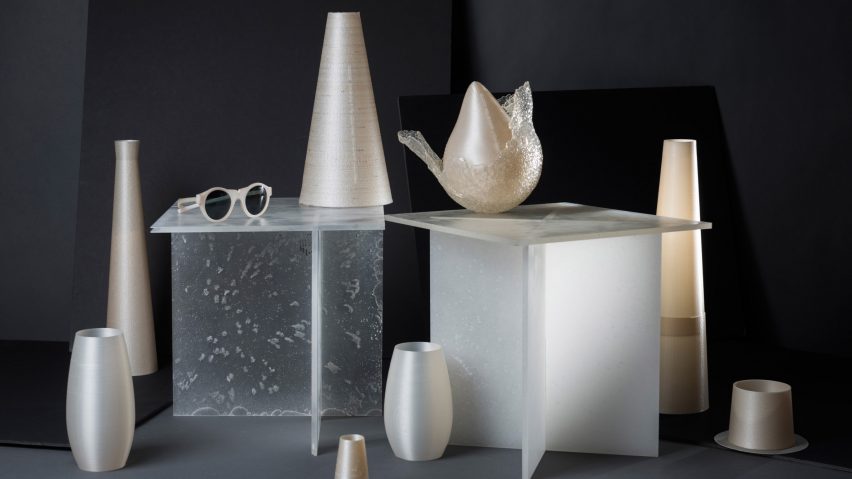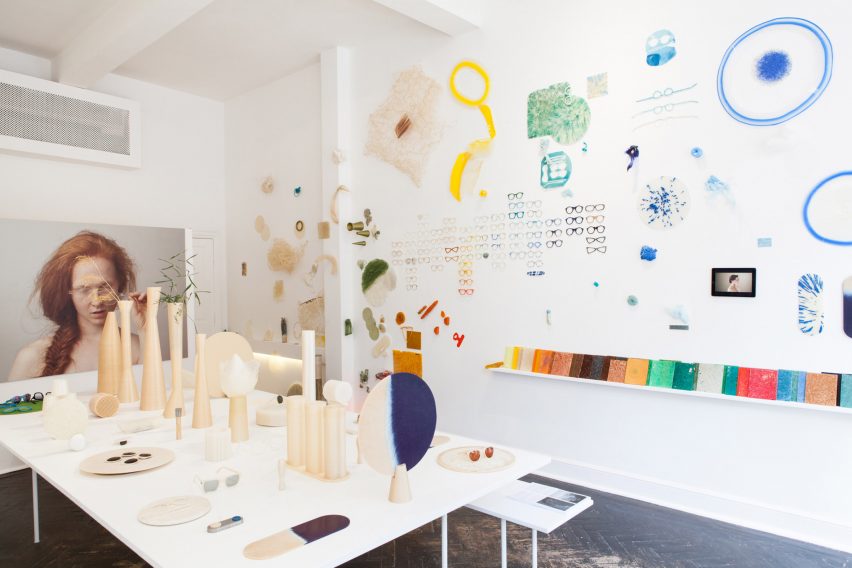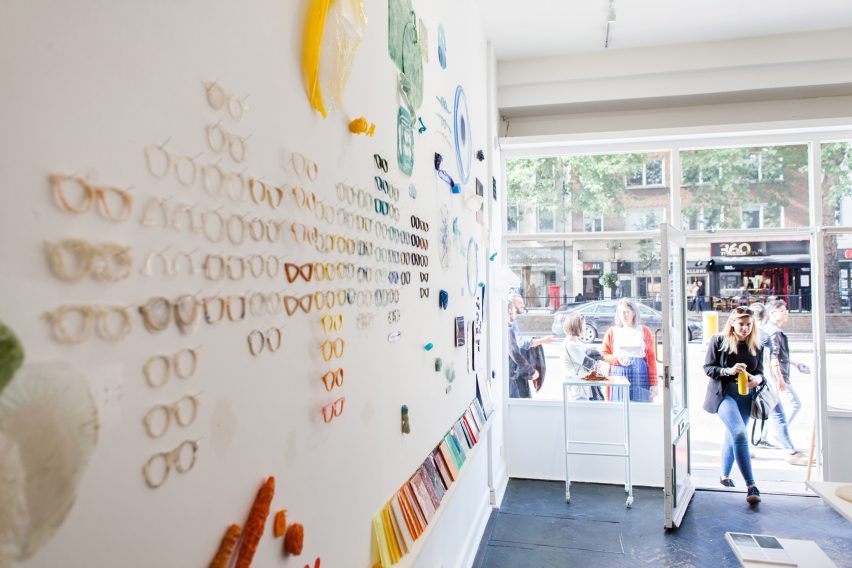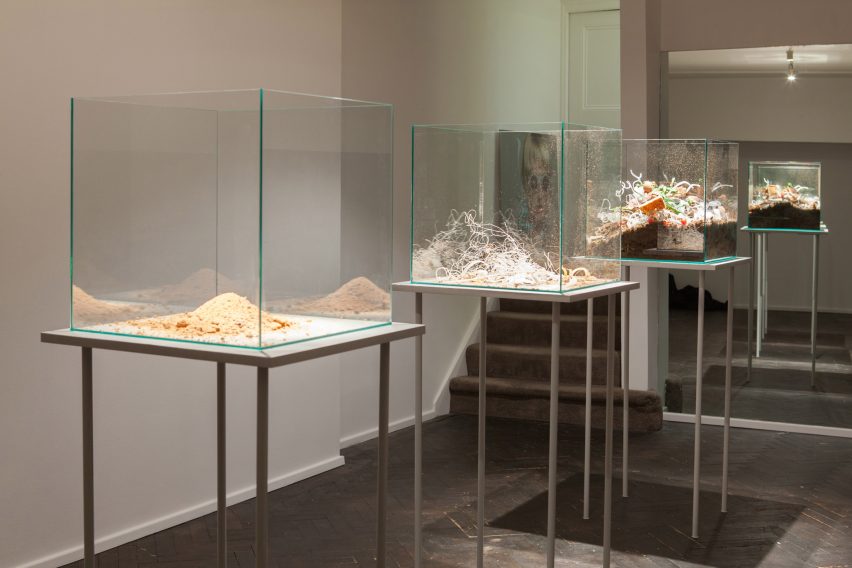
Compostable natural plastic Nuatan can safely be eaten by fish
A type of compostable bioplastic made of corn starch, sugar and used cooking oil, created by Crafting Plastics Studio, could replace "all the packaging we know", according to its designers.
Nuatan, which was presented at an exhibition during London Design Festival, is more durable than previous bioplastics and degrades harmlessly when composted or ingested.
Designer Vlasta Kubušová of Crafting Plastics Studio said that once the material has been granted a food-safety certificate, it could be used for food and drink packaging, meaning its uses could be almost limitless.
"Once we have the certificate, it can replace all the packaging we know," she said.

Nuatan is the result of six years of research conducted with material scientists at the Slovak University of Technology. It is a blend of two different biopolymers.
Polylactic acid (PLA) is a natural plastic derived from corn starch while Polyhydroxybutyrate (PHB) is made from corn starch that has been metabolised by microorganisms.
Fully biodegradable bioplastic
The two ingredients are blended according to a patented recipe to create the new material, which can be injection moulded, 3D printed and blow-formed like traditional plastics.
The designers claim the material can withstand temperatures of over 100 degrees Celsius without losing integrity and has a lifespan of up to 15 years.

"For the first time, a fully bio-based, biodegradable material can be considered as a competitor in terms of properties and processability," they state.
It could be used to replace all single-use plastic products such as water bottles, carrier bags and drinking straws - all items that have attracted negative attention recently due to their impact on the environment.
Fish can eat it
Unlike plastics made from carbon-based raw materials, Nuatan is biocompatible, meaning it is harmless to living creatures. "It degrades inside the human body or animals," Kubušová said, adding that fish could safely eat the plastic.
However it would not biodegrade inside animals or fish, since the material will only compost at temperatures over 60 degrees Celsius when placed in a dense microbial environment, such as a purpose-built composter.
The material is also biodegradable since it can be broken down in industrial composters.

However, the cost of producing the material needs to fall before Nuatan can be widely used. The designers are seeking partners to help develop new products to increase demand, which they hope will lead to a reduction in the price.
We are hoping to find collaborators who want to include it in the right products, and not combine it with other materials, so it's a mono-material," said Kubušová. "If we can find the right collaborators, it can change things a lot."
Bioplastic eyewear
The designers started out demonstrating Nuatan with luxury products, which are less affected by raw material costs. Two years ago the studio developed eyewear featuring frames coloured using natural pigments such as coffee waste, turmeric and indigo.
"We started with value-added products where the material price doesn't make too much difference," Kubušová said. "We hope that these products can create bigger demand so the price can come down."

Now they are looking to develop a wider range of industrial products and claim Nuatan can be used for everything except the most demanding uses, such as exterior parts of cars.
Suitable for 3D printing and blow forming
"We started with eyewear and now we're using it for 3D printing, injection moulding and other plastic manufacturing technologies," the designer said.
The material and its uses were demonstrated at an exhibition in London as part of the London Design Festival last week. Called Feel Free to Consume, the show was part of the Brompton Design District.
It comes at a time of rising interest among designers in exploring solutions to the problems of plastic pollution. Examples include multiple projects that make use of ocean plastic and other experiments with recycling plastics.
"There is more than one solution [to the problem of plastic waste], but this is one of the solutions we know can work within circular design," said Kubušová.